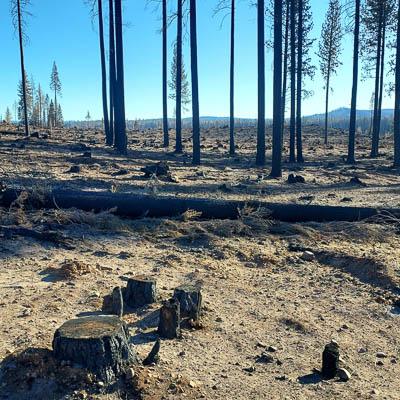The Myth of Chainsaw Medicine: Why Logging Won’t Stop Wildfires
The narrative that logging and prescribed burns are the keys to preventing large wildfires has gained traction. However, this approach, often championed by organizations like The Nature Conservancy (TNC), rests on flawed assumptions about fire ecology and ignores the dominant role of climate change in driving megafires. This article challenges the efficacy of "chainsaw medicine" and explores the ecological consequences of prioritizing logging over genuine fire adaptation strategies.
The argument for active forest management often begins with the assertion that frequent, low-severity fires historically prevented larger blazes. However, this generalization overlooks the diverse fire regimes across Western ecosystems. Many plant communities, including sagebrush, chaparral, and various conifer forests, historically experienced long fire intervals, sometimes spanning centuries. These ecosystems are not experiencing abnormal fuel buildup; their structure and function have evolved around these longer fire cycles. The notion of widespread, open, park-like forests maintained by Indigenous burning is also a misconception. While Indigenous burning practices played a role in some landscapes, their influence was localized and did not dictate the overall fire regime.
The belief that current forests are unnaturally dense and unhealthy due to fire suppression is another pillar of the pro-logging argument. This perspective is often promoted by the timber industry and forestry schools, which view natural mortality from fire, insects, or drought as a sign of forest decline. This is akin to seeing wolf predation as an indication of an unhealthy deer population. In reality, natural disturbances like wildfire are integral to forest health. They create diverse habitat structures, recycle nutrients, and promote resilience to future disturbances. Logging, on the other hand, simplifies forest structure, reduces biodiversity, and can increase fire risk.
The argument that a century of fire suppression has created an overabundance of fuel ignores the overwhelming influence of climate and weather on fire behavior. Large wildfires in the early 1900s, like the 1910 Big Burn, occurred under similar dry, warm conditions as today, and during a period with minimal fire suppression capacity. The subsequent decrease in fire activity between the 1940s and 1980s coincided with a cooler, wetter climate, not increased suppression effectiveness. The resurgence of large fires since the late 1980s is directly linked to rising temperatures and drought driven by human-caused climate change, not fuel accumulation.
Proponents of active management often point to the success of small-scale logging and prescribed burning projects in reducing fire severity. However, these projects are rarely effective against wind-driven megafires, which are the primary drivers of large-scale destruction. Under extreme fire weather conditions, embers can easily travel over, through, and around treated areas, igniting spot fires far beyond the project boundaries. Furthermore, logging can actually exacerbate fire risk by removing larger, fire-resistant trees, leaving behind more flammable smaller trees and slash.
The focus on logging as a fire prevention tool diverts resources and attention from more effective strategies. Reducing carbon emissions to mitigate climate change is the most crucial step in addressing the root cause of increasing wildfire activity. Additionally, hardening homes and communities through fire-resistant building materials and defensible space creation is proven to reduce losses during wildfires. Investing in these strategies offers a far greater return than pouring billions of dollars into ineffective logging projects that degrade forest ecosystems.
The notion of "chainsaw medicine" as a cure for wildfires is a dangerous oversimplification. Logging, even under the guise of forest health, ultimately undermines the ecological integrity of forests. Snag forests, created by natural disturbances like wildfire, are critical habitat for numerous species. Deadwood supports a complex web of life, providing food and shelter for insects, fungi, birds, and mammals. Logging removes these vital components, simplifying the forest and reducing its resilience. The pursuit of "healthy" forests through logging is a misguided approach that fails to recognize the essential role of disturbance and mortality in natural ecosystems. We must move beyond this flawed paradigm and embrace a more holistic approach to fire adaptation that prioritizes climate action, community protection, and ecological integrity.


